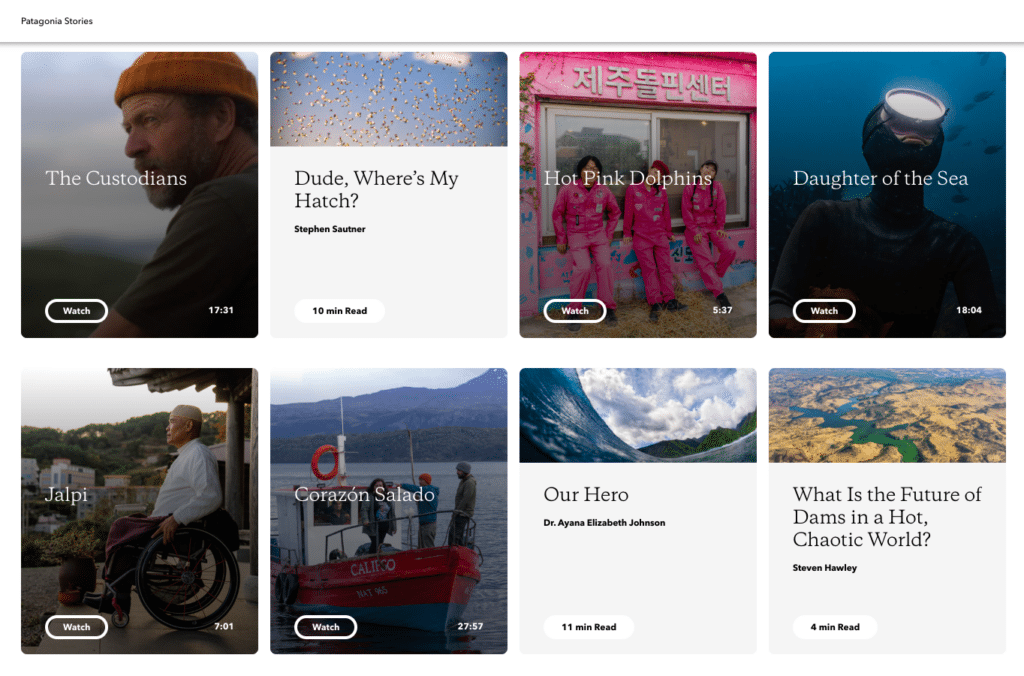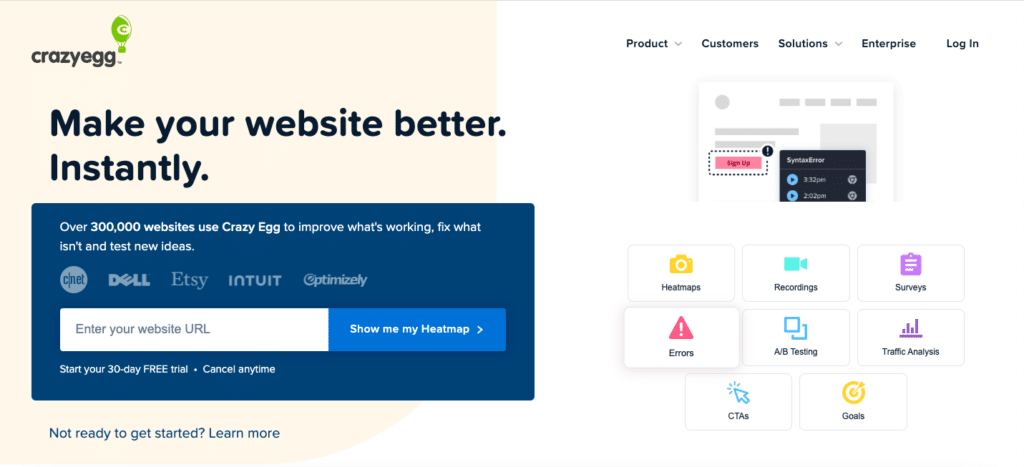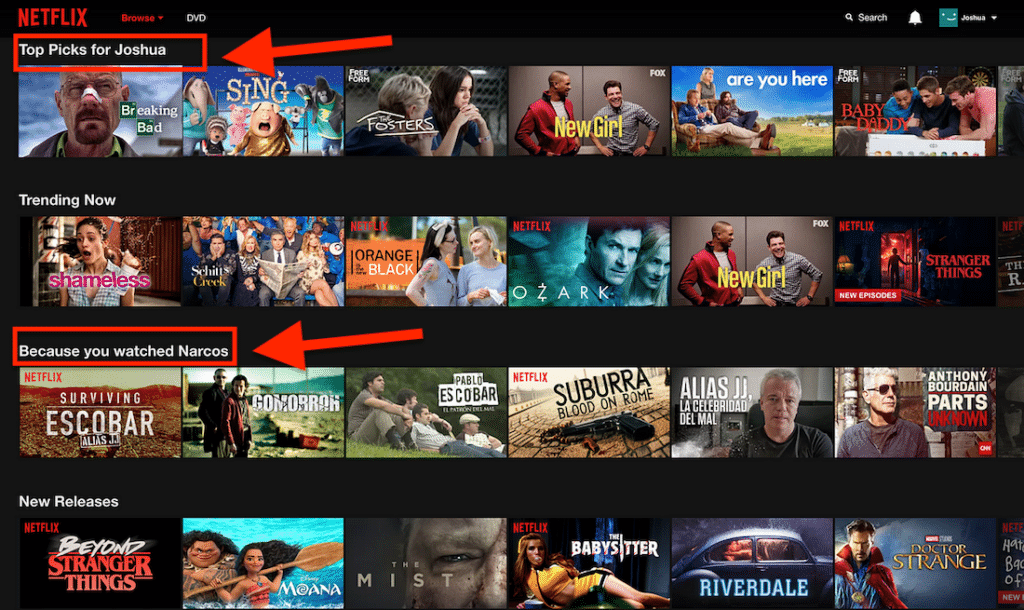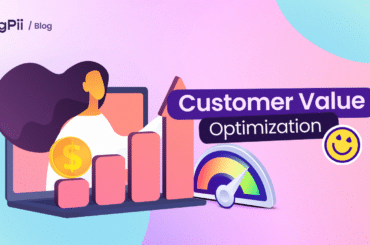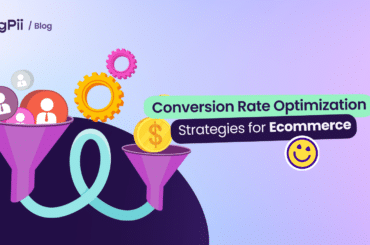Are you looking to increase your business’s bottom line? If so, you’re not the only one.
Businesses often rush to implement various strategies when trying to increase their ROI. Some try to enhance their online presence, while some try to drive conversions.
Search Engine Optimization (SEO) and Conversion Rate Optimization (CRO) are two prominent strategies that often take center stage.
While both are indispensable to online success, both approaches have distinct angles, benefits, and downsides.
This article discusses the most prominent SEO and CRO strategies, their pros, cons, and key differences. We will also address the question: What should your business choose between SEO and CRO?
Search Engine Optimization (SEO)
You’ll have to live under a rock if you aren’t aware of SEO (Search engine optimization).
It’s a process in which search engines discover and rank online businesses. So many businesses implement SEO strategies to get their target audience to their website to convert them into paying customers.
SEO is a long-term strategy for increasing traffic and leads for your site. It takes time, but it’s worth it. With the right approach and tools, you can achieve higher rankings in search results and generate more revenue from your website traffic.
Prominent SEO Strategies
Some of the most prominent SEO strategies include:
1. Keyword Research
Keyword research is to SEO what blog posts are to content marketing.
The “keywords” will help you determine which content to publish and how to craft it. Keywords also help search engines determine whether your content is relevant and how it will appear in search results.
When conducting keyword research, remember that you need to discover what your target audience is looking for. When you include keywords that your target audience will be searching for, the likelihood of your content showing up on search engine results pages (SERPs) when they look for those terms will increase substantially.
You can research keywords using tools like Google Keyword Planner and Ubersuggest.
2. Content Creation
Content creation is another essential part of SEO because it helps you rank higher in SERPs. The key is creating valuable content your target audience wants to read.
This can take many forms: blog posts, infographics, and e-books are all great examples of content people enjoy reading and sharing on social media sites such as Facebook or Twitter.
Your content creation strategy could include videos and infographics, among other formats, to engage and educate your audience.
It makes your website more useful and valuable to visitors, encouraging them to stay longer on your site and return in the future.
3. Link Building
The number of backlinks to your website is an important factor in ranking well in search engines. For the uninitiated, a backlink is a link from another website that points back to yours and sends traffic to it.
Link building is one of the most essential SEO strategies as it helps increase awareness about your brand or business and improve its visibility on major search engines like Google. When credible sources link to your content, it also shows that you’re an authority in your industry, making your content rank higher in search engines.
Additionally, Digital PR link-building strategies, such as those offered by Loopex Digital, can help you secure high-quality backlinks from authoritative websites, boosting your site’s credibility. These strategies often involve leveraging newsworthy content or industry insights to attract media coverage and organic links.
4. Technical SEO
Technical SEO involves configuring your website to allow search engines to crawl and index it properly.
This entails:
- Ensuring fast loading times
- Optimizing your website for mobile-friendliness
- Securing HTTPS
- Optimizing site structure for easy navigation and crawling.
Pros and Cons of SEO
SEO Pros:
1. Increased Organic Traffic:
Increasing your website’s visibility in search engine results is at the heart of SEO, which also leads to more organic traffic.
It’s simple. When a website ranks on the first page of Google, it gets better visibility. And when it has more visibility, the likelihood of reaching relevant people specifically searching for similar products, services, and information also increases.
2. Long-Term Benefits:
Another key advantage of implementing SEO is its ability to provide long-term benefits for your brand or company.
Unlike short-lived marketing and advertising techniques, SEO strategies often result in sustainable results over an extended period.
For example, if you post actionable, SEO-friendly content that’s valuable to your target audience, you will receive ongoing value and return on investment. With some regular updates, it will rank on search engines and give you organic traffic for a long time.
Take Patagonia’s example – a well-known outdoor clothing and gear company.
Their SEO and content marketing strategy includes a comprehensive online resource center focused on niche topics like outdoor adventures, environmental conservation, and sustainable living.
(Source)
Overall, Patagonia’s content strategy also revolves around creating evergreen, SEO-friendly content that remains relevant and valuable over time.
The result?
Their resource center is a go-to destination for outdoor enthusiasts seeking inspiration. This continuous flow of organic traffic increases brand exposure and drives customer loyalty and engagement.
3. Brand Credibility:
We’ve talked about how SEO-friendly content ranks higher in search engines. If your content is ranking on the first page of Google, this also means that Google considers it credible enough for this level of visibility.
When your brand consistently appears in search results and provides valuable information, your target audience is more likely to trust and perceive your brand as an authoritative source in the industry.
For example, Moz, a software company, consistently posts SEO-friendly blog posts and guides that cater to its target audience: digital marketers and SEO professionals. As a result of their SEO strategy, you’ll notice their articles often rank on the first page of Google for keywords in their industry.
Here’s everything they do to make their articles SEO-friendly and rank consistently:
- High-Quality Content: Moz publishes a constant stream of high-quality content addressing the latest trends, challenges, and best practices in their industry. Their blog articles are formatted keeping Google’s SEO guidelines and keywords in mind.
- Thought Leadership: Besides being informational, Moz’s articles showcase their thought leadership in the industry. By providing insightful analysis, data-driven insights, and expert opinions, Moz positions itself as an authority that others in the industry turn to for guidance.
- Backlinks and Citations: Moz further reinforces its brand identity through numerous backlinks and citations it receives from other reputable websites. This shows that counterparts in the industry value their content.
4. Cost-Effectiveness:
Organic traffic generated through SEO is usually more cost-effective in the long run than paid advertising.
Initially, it does require considerable time and effort, but the long-term benefits it offers in terms of organic traffic and brand visibility can result in substantial ROI without the ongoing financial commitments that come with paid advertising.
SEO Cons:
Here are some of the most common challenges you might face when implementing an SEO strategy for your business.
- Time-Consuming: SEO is a long-term strategy that requires continuous effort and patience. Sometimes, seeing significant rankings and organic traffic results can take months.
- Algorithm Changes: Google often changes its algorithms, leaving brands to keep up with the fluctuations in rankings.
- Competitive Landscape: It’s not hidden from anyone just how competitive some industries are, making it extremely difficult to rank for specific keywords. It will take even more time and effort if you’re competing with already established websites.
- Uncertain Results: SEO success can vary due to factors like search engine updates and competition. There’s no guarantee of achieving top rankings or consistent traffic growth.
- Resource Intensive: While SEO appears cost-effective compared to paid advertising, the costs can still increase. You’ll need investment in SEO tools, content creation, and optimization efforts.
- Dependency on Search Engines: SEO heavily relies on search engines’ algorithms and policies, which means the result isn’t in your control. Your ROI depends entirely on changes in ranking algorithms or penalties.
Conversion Rate Optimization (CRO)
Conversion Rate Optimization (CRO) is a process used to increase the number of visitors to your website who become customers.
Optimization experts often even call it “conversion optimization.”
It’s a marketing strategy that uses A/B testing, personalization, and other methods to improve the percentage of users who perform specific actions on your site.
That action could be anything – from signing up for a newsletter, buying something from your ecommerce store, or buying an e-book.
Major CRO Strategies
1. User behavior analysis
User behavior analysis is actually at the heart of the overall CRO strategy.
CRO is all about increasing conversion rates, and to convert your visitors into paying customers, you need to understand them first.
And this is what user behavior analysis is all about. It’s a way to analyze how your website visitors interact with your site, how they move through the different web pages, and why they do so.
Are they scrolling down till the end? Are they bouncing back after reaching a specific point?
For example, let’s say you discover that many visitors leave your homepage immediately without clicking on anything. In that case, you’ll probably want to optimize your homepage in such a way as to encourage visitors to stay longer and take the intended action.
Pro Tip: Leverage all-in-one CRO tools like FigPii with heatmaps, session recordings, and user flow analysis to help you understand how visitors interact with your website.
2. A/B Testing
A/B testing includes creating variations of key elements (e.g., headlines, images, buttons) and testing them against each other.
Once you create these versions, you’ll analyze which version performs better in terms of conversions to make data-driven decisions.
You can test anything from buttons and calls to action to how many words are in a sentence. The aim is always the same: To increase conversions by making things easier for visitors (and hopefully more profitable for you).
The results of these tests are analyzed using A/B testing software like FigPii or VWO — both of which allow you to run tests without much technical know-how.
3. Multivariate Testing
Unlike A/B testing, where you were testing two variations, multivariate testing involves testing multiple variations of multiple elements simultaneously to identify the best combination.
It’s beneficial for complex websites with multiple potential conversion paths.
4. Landing Page Optimization
Landing page optimization is the most important part of creating a conversion-focused website. It’s what helps you convert visitors into customers.
The best landing pages are designed to help people take the desired action and are focused on solving one problem for a specific audience.
A good landing page will improve your conversion rate and sales, but a bad one can cost you money and damage your brand reputation.
The following are some of the most common mistakes made when it comes to optimizing your landing pages:
- Not having a clear call-to-action (CTA)
- Using too much text on your page
- Not making your copy persuasive enough
- Not testing different variations of your landing pages
5. Form Optimization
When you’re ready to take your conversion rate optimization (CRO) campaign to the next level, form optimization is the way to go.
Form optimization is the process of making changes to a website’s forms to increase conversions. This can involve changing the placement and design of fields like buttons, text boxes, and checkboxes. It can also involve changing how users interact with form fields.
6. Content Personalization
It involves tailoring content and offers based on your audience’s preferences and behavior. After all, the motive is to encourage the target audience to perform an intended action. To do that, you’ll need to personalize the content to align precisely with their requirements.
Content personalization can be done in many ways, including:
- Based on location: You can tailor different content based on where your visitors are in the world. For example, if you have a website for selling products to customers in different countries, then you can show them relevant content based on their location.
- Based on interests: You can also tailor different content based on the interests of visitors by using tools like Google Analytics and Google Search Console, which provide insights into what people search for and how they interact with search results.
- Based on past behavior: Another way to personalize content is by looking at users’ behavior through cookies or other tracking systems such as Google Analytics.
Pros and Cons of CRO
CRO Pros:
1. Improved Conversions
One of the primary benefits of CRO is its ability to significantly increase the percentage of website visitors who complete desired actions, leading to improved conversion rates.
Businesses can create a smoother user journey that guides visitors toward specific actions by strategically optimizing various website elements. It could be filling out a form, purchasing something, or subscribing to a newsletter.
Crazy Egg’s website is a perfect example of how a website can implement CRO strategies to boost conversion rates.
They recognized their target audience consisted of marketers, business owners, and web designers. Considering this, they revamped their landing page for the free trial with a clear value proposition.
Also, note their prominent, contrasting CTA button with clear wording (“Show me my Heatmap”) that stands out on the page. The CTA effectively communicates the next step visitors should take.
2. Faster Impact
CRO offers the advantage of quicker conversion rate improvements compared to waiting for organic traffic growth from SEO. Unlike SEO, the optimization efforts aren’t dependent on external algorithms, and it’s up to you how you change your website elements.
By optimizing existing website elements and user experiences, you can see immediate changes in user behavior and conversions.
3. Data-driven Decisions
CRO relies on user behavior analysis and A/B testing to guide decision-making.
This data-driven approach ensures that changes to a website are based on concrete insights rather than assumptions, leading to more effective improvements in conversion rates.
4. Better User Experience
Enhancing the overall user experience on a website is at the heart of the entire CRO process.
By improving usability, navigation, and design elements, businesses can create a seamless and enjoyable experience for visitors, leading to higher conversion rates.
AirBnb’s website is an excellent example of a brand employing various CRO strategies to optimize the user experience.
First, you’ll notice how Airbnb’s website features a clean and intuitive design, making it easy for users to search for accommodations and experiences.
To make the user experience smoother for their audience, they’ve got filters to narrow down the search based on location, price range, amenities, and the like.
Another CRO practice that makes AirBnb shine is using high-quality images of listings, giving users a clear view of what to expect.
Their displayed properties also have detailed property descriptions, guest reviews, and ratings – all of which contribute to helping users make a confident choice.
(Source)
As a result of AirBnb’s CRO strategies, they’re now one of the most popular online marketplaces for lodging and travel experiences. The smooth user experience has also helped the brand garner a loyal user base that returns for multiple bookings and recommends their platforms to others.
5. Adaptable to Audience Preferences
CRO involves tailoring your website experiences and content, keeping user behavior and preferences in mind.
By understanding how visitors interact with a website, businesses can make targeted optimizations that align with audience preferences.
And when you give your audience precisely what they want, it naturally leads to higher conversion rates.
Take Netflix, for instance.
The global streaming platform excels in adapting its platform to user preferences by providing personalized content recommendations.
Here’s everything Netflix does to implement CRO:
- Personalized Content Recommendations: Netflix’s homepage dynamically showcases content recommendations based on your viewing history and preferences. They use advanced algorithms to analyze viewing behavior and suggest shows and movies tailored to individual tastes.
(Source)
- User Interface Customization: The platform allows users to create profiles for family members, each with their preferences and recommendations. This customization enhances the user experience and encourages longer engagement.
- Continuous Learning: Netflix constantly learns from user interactions. They track popular shows, trailers are watched, and how users navigate the platform. This data informs decisions on content acquisition and user interface design.
The result?
Netflix is one of the biggest OTT platforms in the world right now, with a highly engaged audience.
CRO Cons:
- Resource Intensive: CRO requires time, effort, and resources for testing, analysis, and implementation of changes. Continuous optimization also means you’ll spend much on manpower and optimization tools.
- Potential for Short-Term Focus: Focusing solely on short-term optimizations for immediate gains might neglect longer-term strategies. Overemphasis on quick wins could also lead to missing out on strategic growth opportunities.
- Subjectivity in Interpretation: Interpreting test results can be subjective and open to biases. Different stakeholders might also have varying interpretations, leading to conflicting decisions.
- Data Dependency: CRO exceedingly relies on accurate and reliable data for decision-making. Poor data quality or limited data can lead to misguided optimizations.
- Potential for Over-Optimization: Over-optimizing website elements might lead to a cluttered and less user-friendly experience. Constant changes can also confuse users and hamper the overall user experience.
- Risk of Negative Impact: If your A/B tests give negative results, it might also negatively impact user engagement.
- Limitations in Sample Size: Small sample sizes in A/B tests might lead to inconclusive or unreliable results. In that case, variations might also not accurately represent the broader user base.
SEO vs. CRO: Which to Choose and Why
Both SEO and CRO have their fair share of downsides and advantages. Which optimization method should you choose for your business?
Let’s find out.
Core Objectives
Businesses implementing SEO aim to increase their site’s visibility on search engine results pages (SERPs). Once they decide to implement SEO strategies, they optimize their content and site’s technical elements to rank higher for relevant keywords.
On the other hand, CRO is used to optimize the user experience for better conversion rates.
So, if your goal is to generate organic traffic over the long term and establish a strong online presence, SEO is the way to go. CRO is a better option for businesses with decent traffic but want to maximize existing visitors’ value.
Timeframe and Speed of Impact: Managing Expectations
If you plan to optimize your site for SEO, remember it’s a long-term strategy. You won’t get quick results, or your articles won’t go viral immediately. It requires time to witness substantial results.
On the other hand, CRO gives you quicker results since your tweaks lead to an immediate impact on user experience and conversions.
If you want to establish a strong online presence, build authority, and generate sustained organic traffic over time, you might want to prioritize SEO. On the other hand, if you’re looking to maximize the value from their current visitors, you’ll prefer CRO.
Traffic Source: Identifying the Audience Acquisition
You will most likely get organic traffic from search engines like Google when implementing SEO strategies.
Regarding CRO, your target audience will likely come from all sources, including organic, direct, referral, and paid traffic. In most cases, brands already have substantial traffic on their site by the time they plan to implement CRO strategies. They already have the traffic, and now the aim is to convert those visitors into paying customers.
Making Informed Choices: SEO vs. CRO
SEO and CRO strategies are integral to a comprehensive online marketing approach, and selecting the right one for your business will depend on your objectives, available resources, desired timeline, and the audience acquisition medium.
It’s also worth noting that SEO and CRO are not mutually exclusive options. You can also combine both to increase your business’s visibility and increase conversions.
This balanced approach will help you tap into each strategy’s unique strengths and ensure you’re not solely relying on one aspect of digital marketing.



